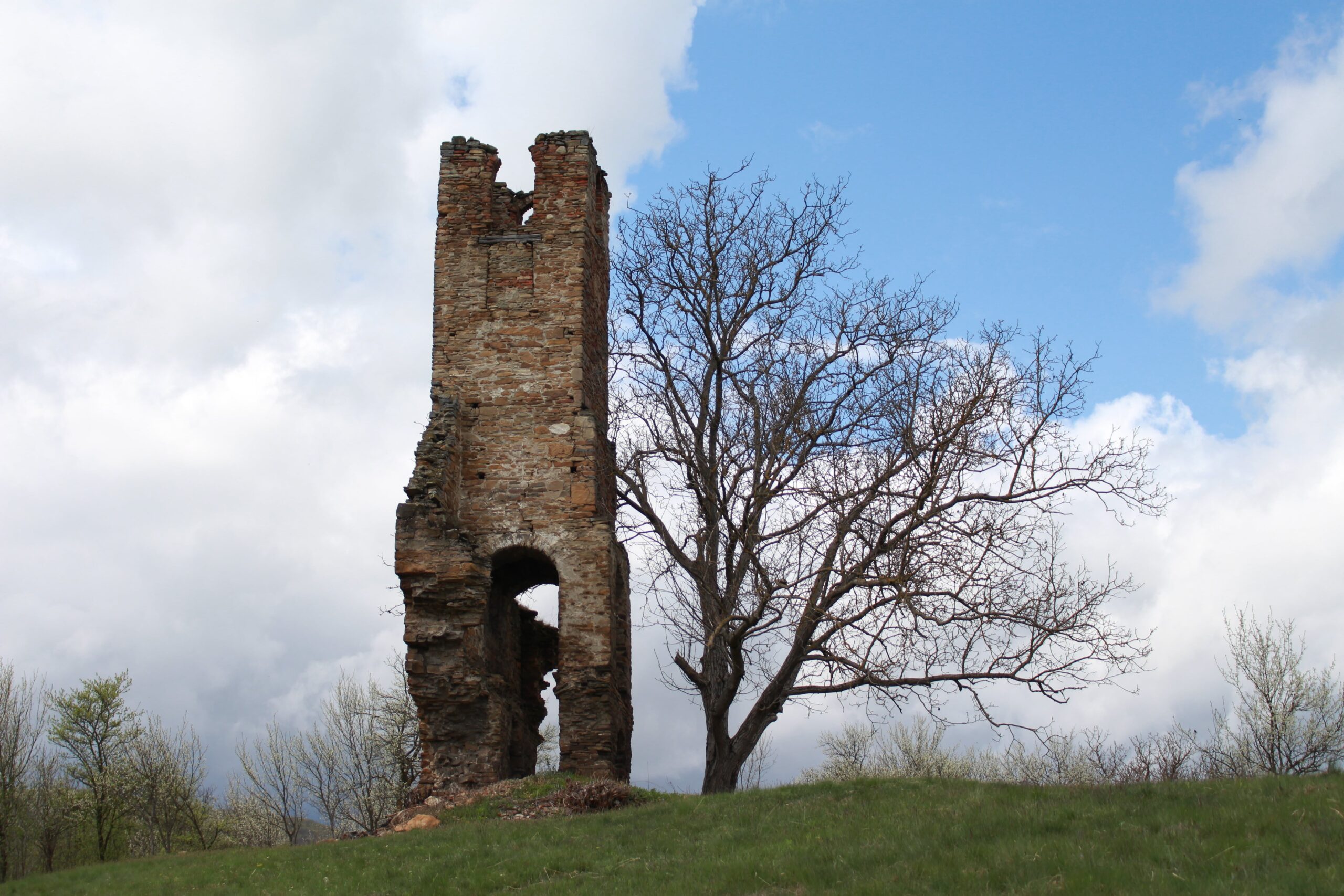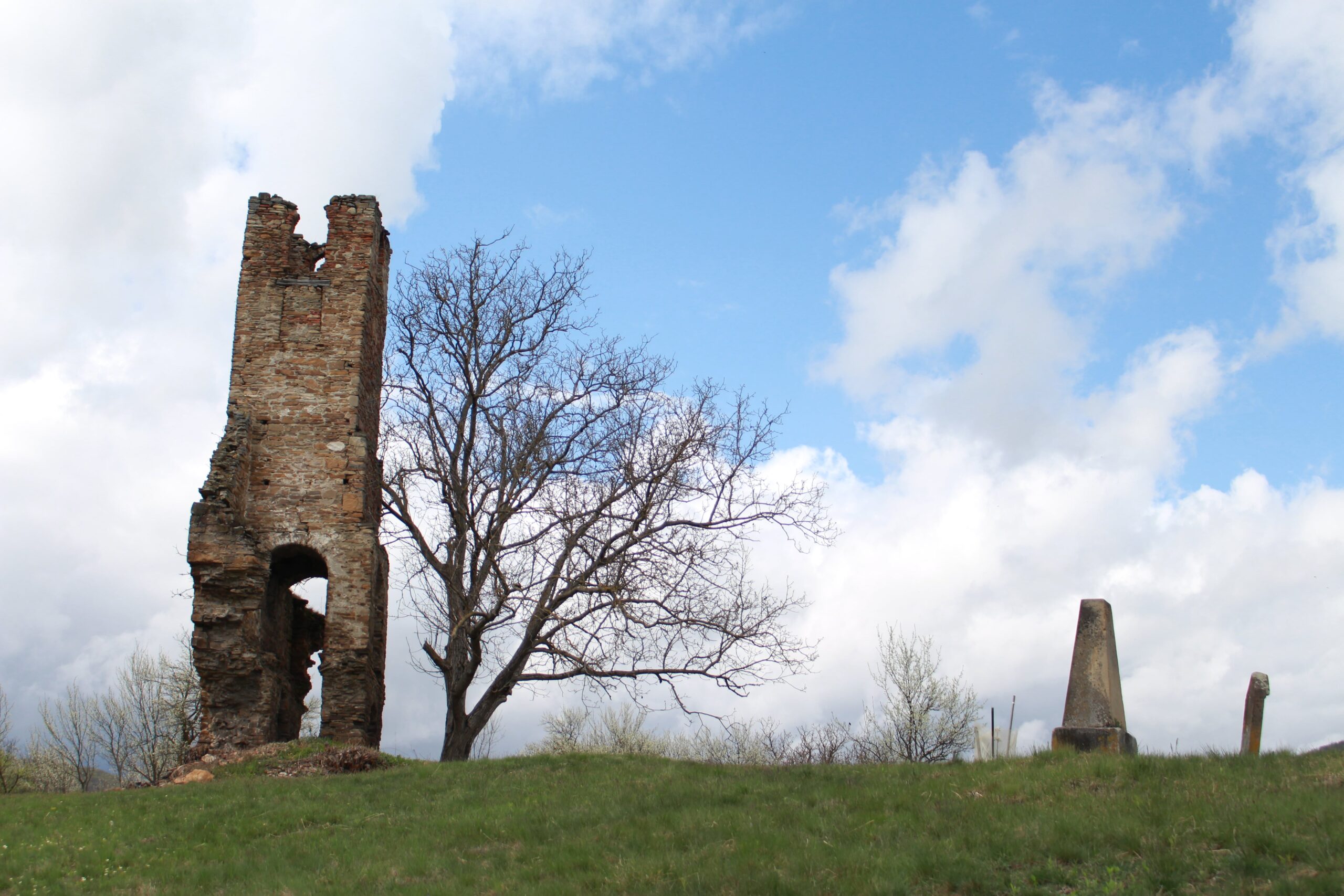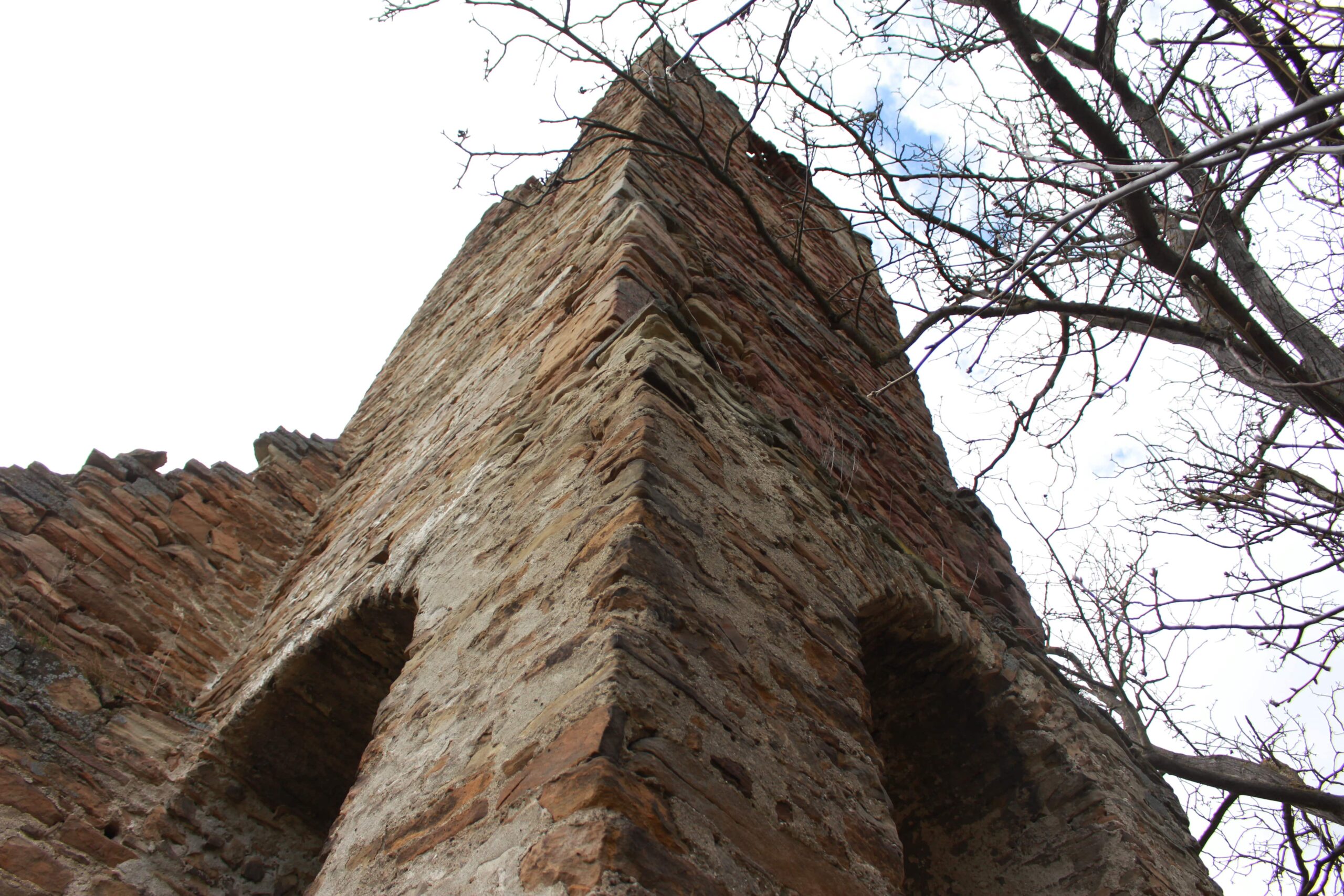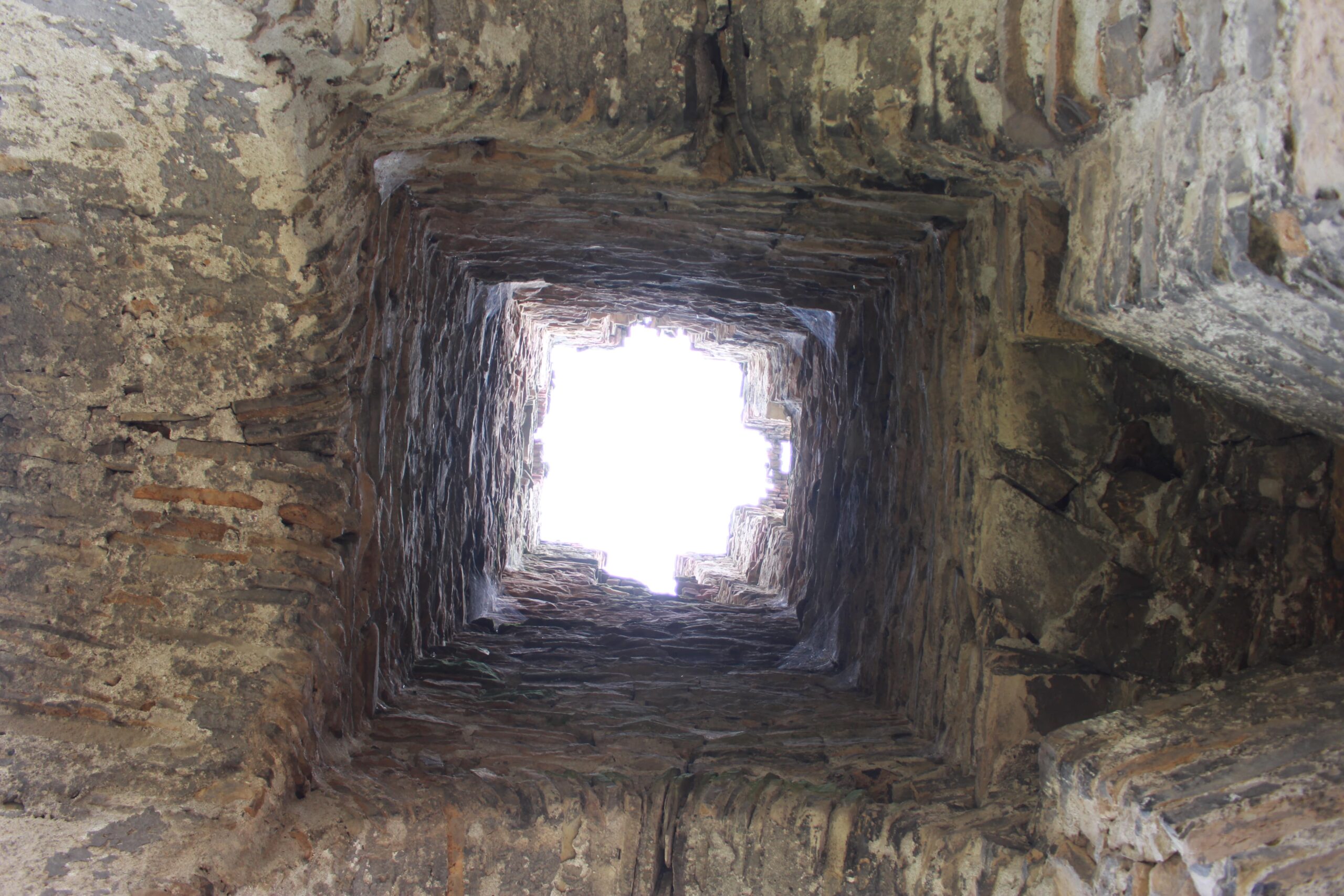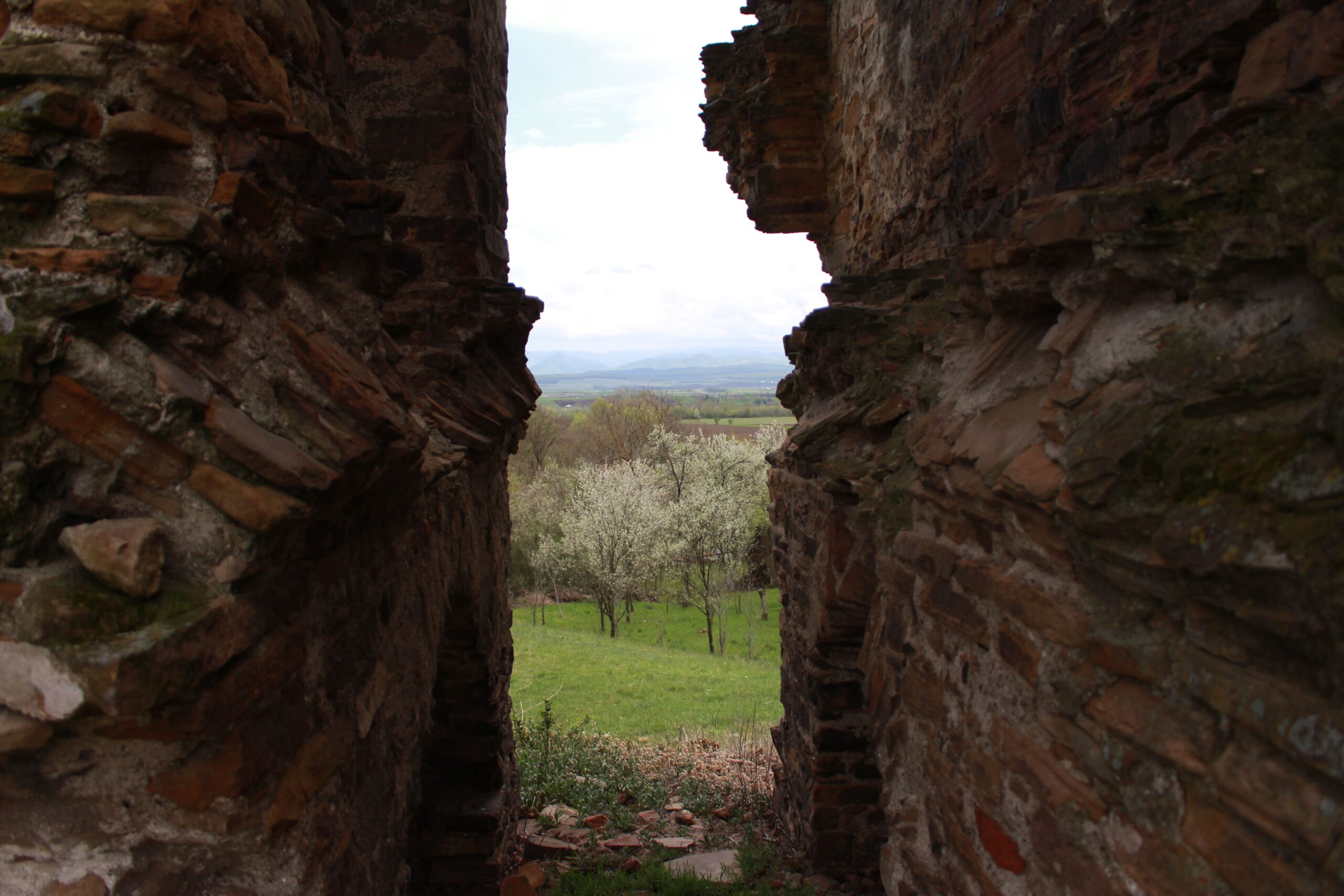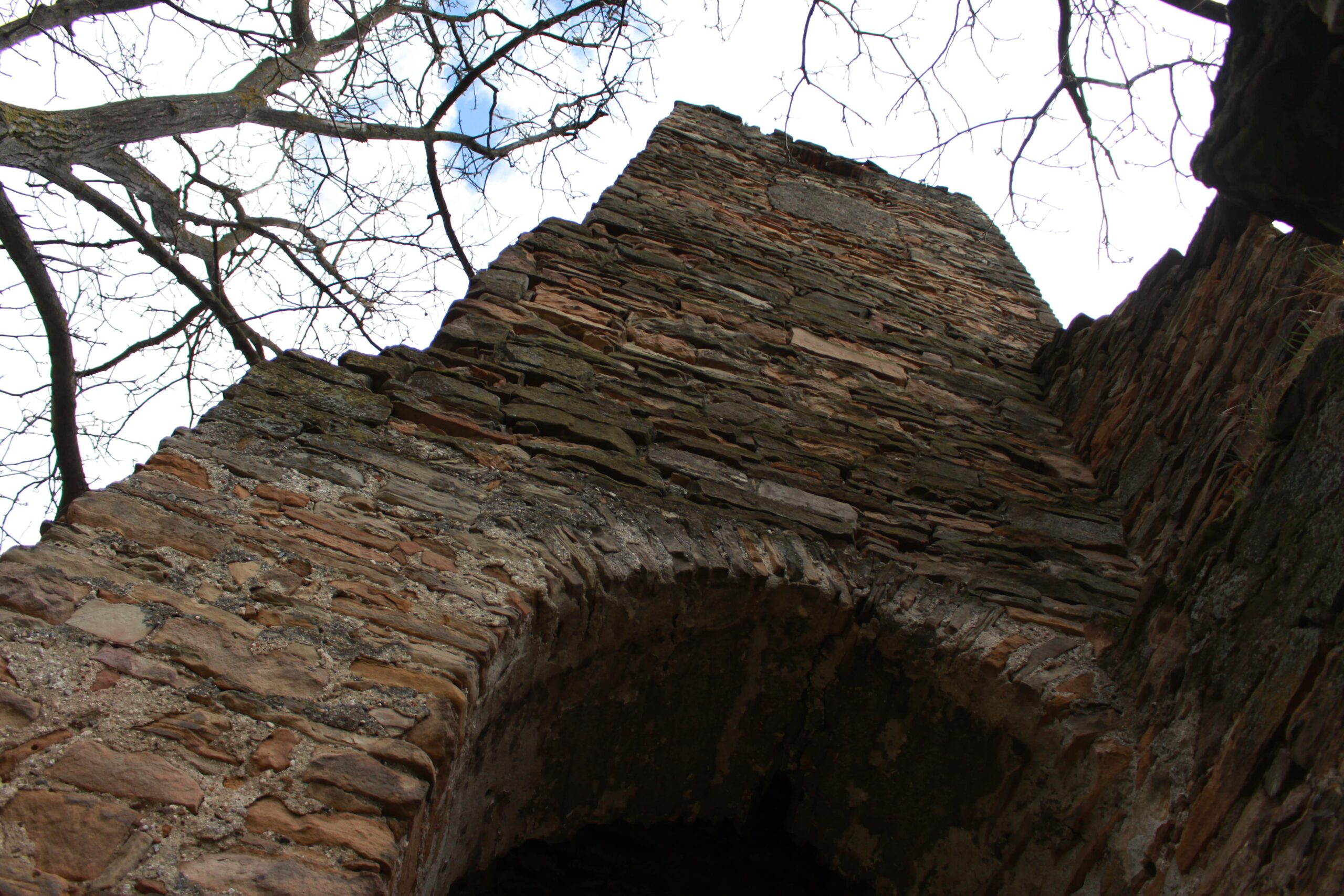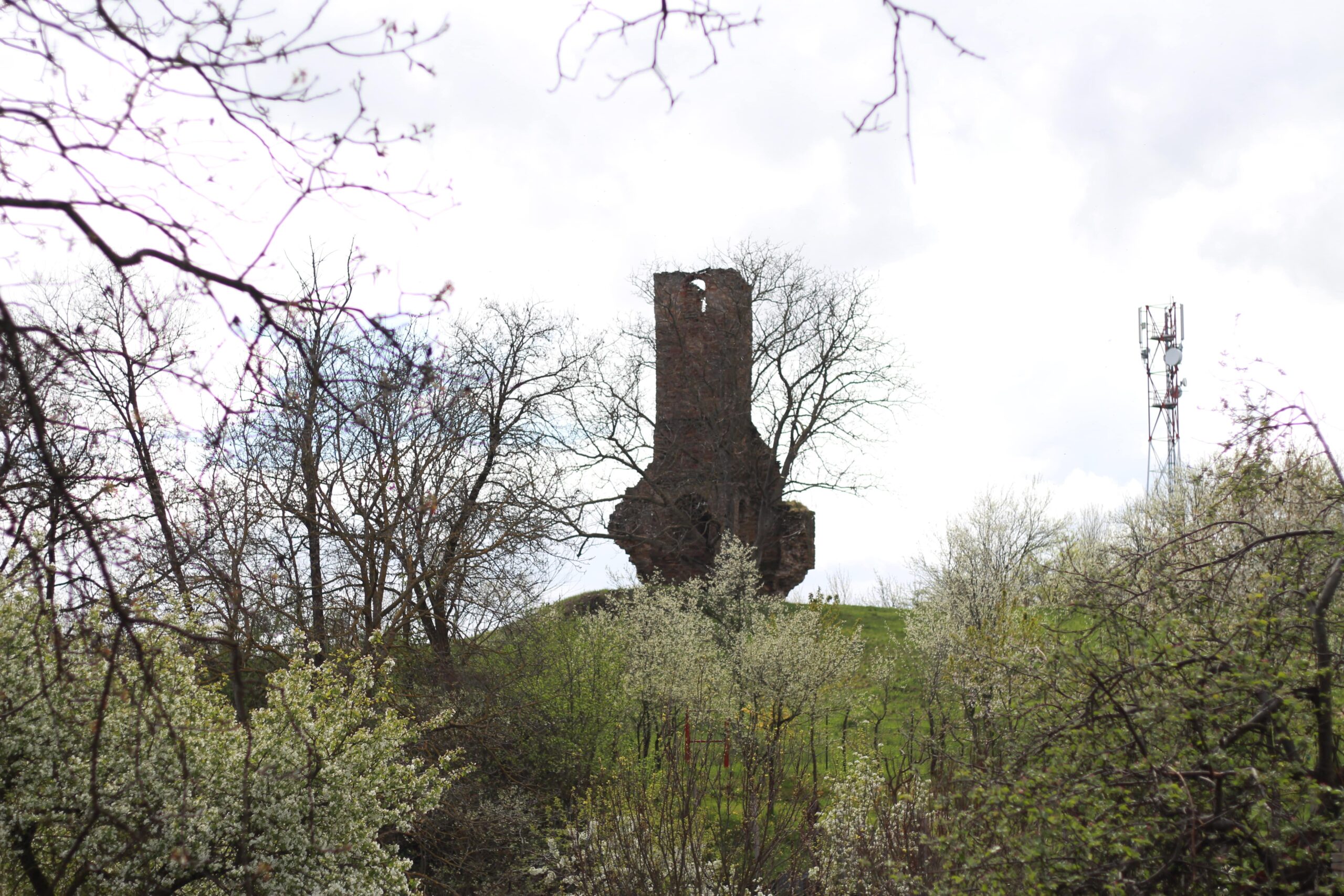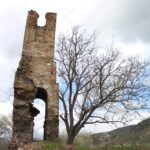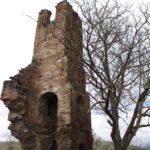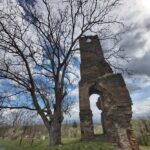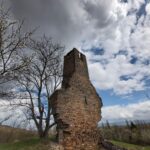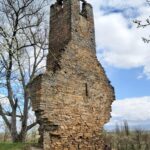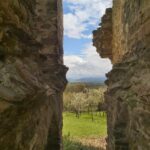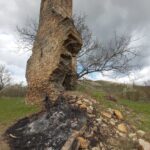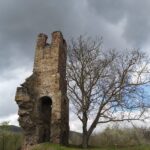Băcăinți (Bokajalfalu, Bocksdorf) – Alba County
Built even before the Mongol invasion of 1241, the stone church in Băcăinți is a historic monument with an unusual fate. Without parishioners since the mid-20th century, the former Romanesque church became the subject of a convoluted legal case. Meanwhile, the risk of collapse for the tower standing on the edge of the village on the right bank of the Mureș River is growing.
The Stone Church in Băcăinți – a Romanesque construction from the Árpád Dynasty
Made of uncut stone, the Romanesque church in Băcăinți is believed to have been built in the early 13th century. Some sources claim it was erected even earlier, around the turn of the 11th–12th centuries, long before the Saxon colonization and the Mongol raids. The monument had a single rectangular nave with a semicircular apse. Similar to basilicas of those times, the western side of the hall-church featured a gallery and a bell tower. Only the tower remains today — once boasting two rows of semicircular windows. While the church’s walls were still standing in the early 20th century, today only faint traces of the nave and apse foundations remain.
Lonely and weathered by time, the surviving tower witnessed the most significant historical event in the area. Fought on October 13, 1479, the Battle of Breadfield entered regional memory as a heroic act of resistance against Ottoman oppression. Tired of Turkish looting, thousands of Hungarians, Szeklers, Saxons, Wallachians, and Serbs united under Voivode Stephen Báthory and Count of Temes County, Pál Kinizsi, and crushed the army of Sultan Mehmed II. Honored by both Romanians and Hungarians, the cult of Pál Kinizsi — King Matthias Corvinus’ brave captain — led to the peculiar ownership situation surrounding the ruins in Băcăinți.
Who owns the historic complex and Stone Church in Băcăinți?
In May 2021, the Hungarian foundation Pontes paid €6,500 to the Reformed Parish of Alba Iulia for the complex in Băcăinți consisting of the church ruins and a cellar. Previously, the Alba Directorate for Culture and Heritage, the Alba County Council, and the local authorities in Șibot all declined their preemptive purchase rights. Thus, the Hungarian foundation from Nagyvázsony (where Pál Kinizsi is laid to rest), aimed to restore the ruins and create a memorial park on the 2.600-square-meter plot which includes an old cemetery. However, the plans were dashed when the sales contract was annulled.
It seems the land was already parceled out by Șibot authorities in the chaotic 1990s under Law 18/1991 regarding land ownership. However, the property had never been nationalized, so the Reformed Church technically never lost ownership. The current landowner, who presumably bought it from a neighbor, won the legal battle, and the transaction was annulled. Thus, the stone church’s tower remains in legal limbo — still the property of the Reformed Parish of Alba Iulia, but now on privately owned land! The biggest loser is the village of Băcăinți, left without a project that could have saved its historical legacy and revived local tourism.
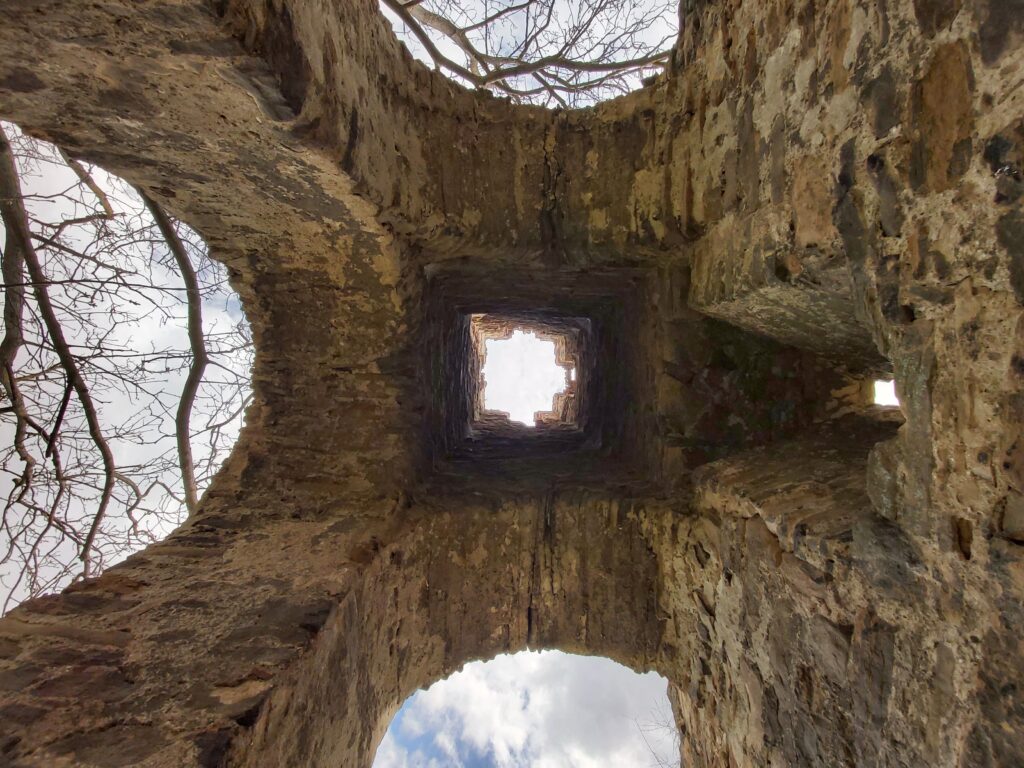
The Reformed community of Băcăinți completely vanished by the 1950s, having been decimated multiple times over the centuries. Today, access to the church ruins is only possible through a local resident’s orchard. For how long — only God knows…

